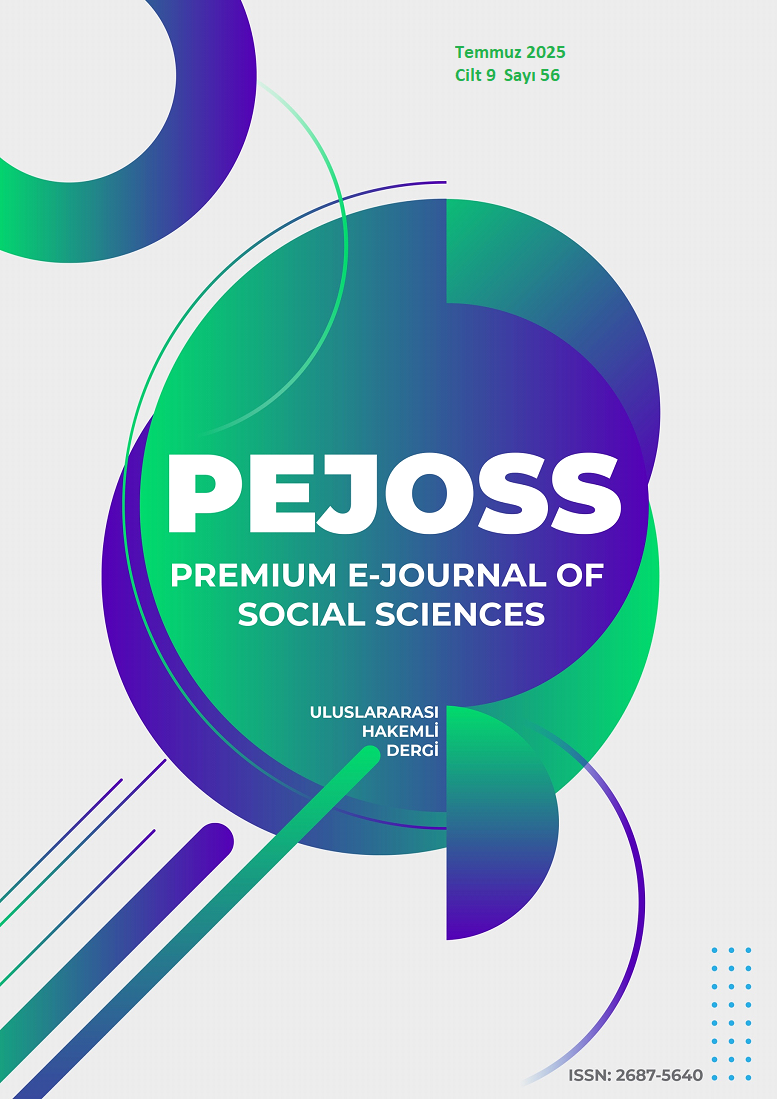Women In Working Life And Partner Violence: The Role Of Cultural Influences
DOI:
https://doi.org/10.5281/zenodo.15656143Keywords:
Toplumsal Cinsiyet Roller, Kadına Yönelik Şiddet, Partner Şiddeti, Kültürel Perspektifler, Demografik FaktörlerAbstract
This study, titled "Women in Working Life and Partner Violence: The Role of Cultural Influences", focuses on research conducted with 50 women in İstanbul. The study is centered on examining violence against women within the context of gender roles, self-esteem, attitudes towards violence in dating, and couples attitudes. The methodology of the research includes a quantitative survey study conducted using various scales. The findings of the research show significant statistical relationships between participants' marital status, education levels, employment status, and the sub-dimensions of the values scale. For instance, single and widowed participants were found to have higher freedom scores compared to those who are married. Additionally, as the level of education increases, career values increase while attitudes towards physical violence decrease. One of the most striking findings is that with the increase in participants' age, the scores of the gender role scale and moral values increase, whereas intellectual values, freedom, and romantic values decrease. In terms of relationship duration, participants in relationships of five years or longer were found to have lower intellectual and romantic values. The study reveals that women's tendency to tolerate partner violence is closely related to their social and demographic characteristics. These findings indicate that factors such as gender roles, education, and economic independence play a significant role in women's attitudes towards violence. The recommendations section emphasizes the need to develop social support programs for the protection of women from violence and to teach effective communication skills at an early age. Furthermore, increasing awareness about parenting education and gender roles can play a crucial role in preventing violenc
Downloads
References
Ackard, M. D., Eisenberg, M. E., & Neumark-Sztainer, D. (2007). Long-term impact of adolescent dating violence on the behavioral psychological health of male and female youth. The Journal of Pediatrics, 151(5), 476–481. https://doi.org/10.1016/j.jpeds.2007.04.045
Ackard, M. D., & Neumark-Sztainer, D. (2002). Date violence and date rape among adolescents: Associations with disordered eating behaviors and psychological health. Child Abuse & Neglect, 26(5), 455–473. https://doi.org/10.1016/S0145-2134(02)00323-7
Bingöl, O. (2014). Toplumsal cinsiyet olgusu ve Türkiye’de kadınlık. KMÜ Sosyal ve Ekonomik Araştırmalar Dergisi, 16(Özel Sayı I), 108–114.
Callahan, R. M., Tolman, R. M., & Saunders, D. G. (2003). Adolescent dating violence victimization and psychological well-being. Journal of Adolescent Research, 18(6), 664–681. https://doi.org/10.1177/0743558403254784
Coştu, Y. (2009). Toplumsallaşma kavramı üzerine sosyolojik bir değerlendirme. Din Bilimleri Akademik Araştırma Dergisi, 9(3), 117–140.
Craparo, G., Gori, A., Petruccelli, I., Cannella, V., & Simonelli, C. (2014). Intimate partner violence: Relationships between alexithymia, depression, attachment styles and coping strategies of battered women. The Journal of Sexual Medicine, 11(6), 1484–1494. https://doi.org/10.1111/jsm.12505
Erdem, A.R. (2015). “Atatürk’ün Kadına ve Kadın Eğitimine Verdiği Önem”. Belgi, 9 (1) (1266-1277).
Fichter, J. H. (1996). Sosyoloji nedir? (N. Çelebi, Çev.). Attila Kitabevi.
Kutluk, Ş. (1994). Farklı nedenlerle çocuk sahibi olamayan kadın ve erkeklerin depresyon ve benlik saygısı bakımından karşılaştırılması (Yayımlanmamış yüksek lisans tezi). Ankara Üniversitesi Sosyal Bilimleri Enstitüsü.
Merghati-Khoei, E., Korte, J. E., Rimaz, S., Back, S. E., Brady, K. T., & Shamsalizadeh, N. (2014). Intimate partner violence and Iranian women with substance use disorders. Drug and Alcohol Dependence, 312–314. https://doi.org/10.1016/j.drugalcdep.2013.10.030
Powers, A. R., & Kaukinen, C. E. (2012). Trends in intimate partner violence: 1980–2008. Journal of Interpersonal Violence, 27(15), 3072–3090. https://doi.org/10.1177/0886260512441077
Swart, L.-A., Seedat, M., Stevens, G., & Ricardo, I. (2002). Violence in adolescents’ romantic relationships: Findings from a survey amongst school-going youth in a South African community. Journal of Adolescence, 25(4), 385–395. https://doi.org/10.1006/jado.2002.0483
Taşdemir Afşar, S. (2015). Türkiye'de şiddetin “kadın yüzü”. Istanbul Journal of Sociological Studies. https://doi.org/10.18368/IU/sk.04297
TÜİK. (2012). İstatistiklerle kadın, 2012. Türkiye İstatistik Kurumu. http://www.tuik.gov.tr/PreHaber Bultenleri.do?id=13458
TÜİK. (2016). İstatistiklerle kadın, 2016. Türkiye İstatistik Kurumu. http://www.tuik.gov.tr/PreHaber Bultenleri.do?id=24643
Watkins, L. E., Maldonado, R. C., & DiLillo, D. (2014). Hazardous alcohol use and intimate partner aggression among dating couples: The role of impulse control difficulties. Aggressive Behavior, 40(4), 369–381. https://doi.org/10.1002/ab.21530
World Health Organization. (2014). Global status report on violence prevention 2014. WHO. https://www.who.int/publications/i/item/9789241564793
Yount, K. M., Pham, H. T., Minh, T. H., Krause, K. H., Schuler, S. R., Anh, H. T., VanderEnde, K., & Kramer, R. (2014). Violence in childhood, attitudes about partner violence and partner violence perpetration among men in Vietnam. Annals of Epidemiology, 24(5), 333–339. https://doi.org/10.1016/j.annepidem.2014.02.007
Downloads
Published
How to Cite
Issue
Section
License
Copyright (c) 2025 Premium e-Journal of Social Science (PEJOSS)

This work is licensed under a Creative Commons Attribution 4.0 International License.


